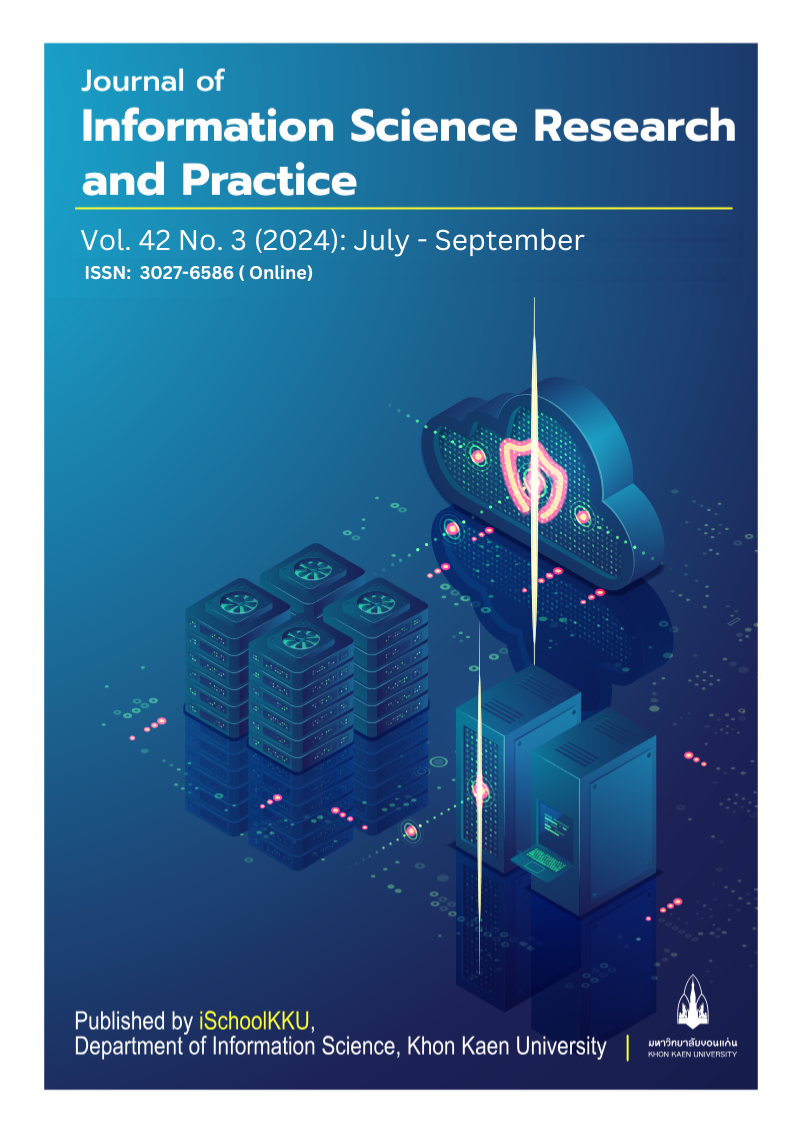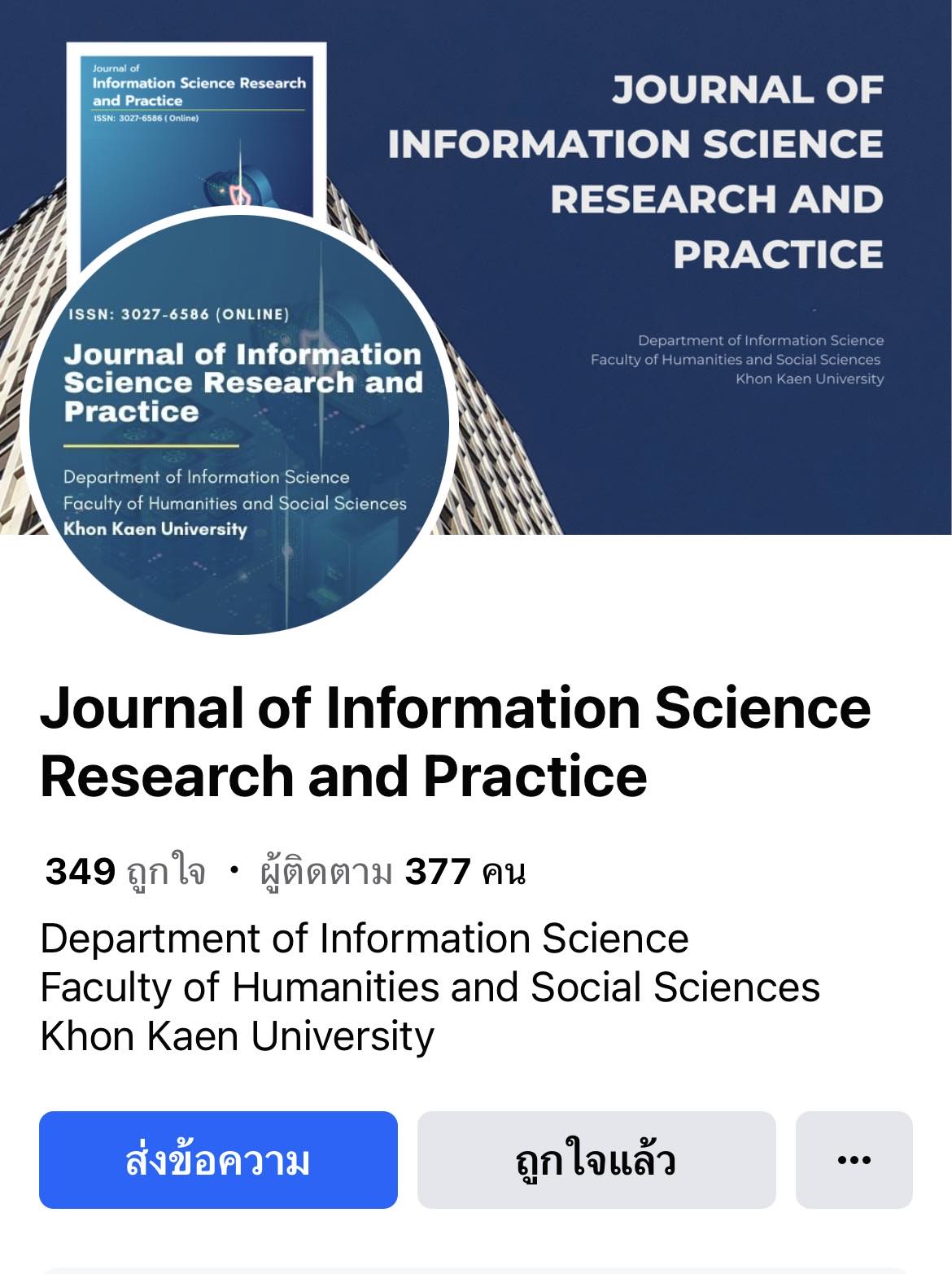The Study of the Distribution and Clustering of Tourist Attraction Zones and Facilities in Buriram Province using the DBSCAN Algorithm
DOI:
https://doi.org/10.14456/jiskku.2024.17Keywords:
Distribution of tourist attractions, Clustering of tourism zones, DBSCAN algorithm, Data Management, Spatial dataAbstract
Purposes: To investigate the distribution and clustering of tourist attraction zones and facilities in Buriram Province using the DBSCAN algorithm and to cluster the tourism zones in Buriram Province.
Methodology: The research methodology employed five stages of data mining. Firstly, data collection was conducted by extracting 400 data points from websites. Secondly, data preparation was performed. Thirdly, the data were grouped using the DBSCAN algorithm. Fourthly, the results were presented through maps displaying the spatial distribution of tourist attractions and facilities and showcasing the clustering of tourism zones. Lastly, the effectiveness of the grouped tourism zones in Buriram Province was evaluated by comparing them with existing tourism routes.
Findings: The research findings reveal that the DBSCAN algorithm successfully clustered the tourism zones in Buriram Province using data extracted from websites. The study identified three distinct zones: the sports tourism zone, the Khmer cultural heritage tourism zone, and the culinary cultural tourism zone. Comparing the grouped tourism zones with the established tourism routes in Buriram Province showed a correlation between the two datasets. This indicates that the DBSCAN algorithm can be utilized as a valuable tool for studying the distribution and clustering of tourism zones in Buriram Province.
Applications of this study: The DBSCAN algorithm can be used as a tool to present data on the spatial distribution of tourist attraction zones in Buriram Province in order to support the consideration of tourism development and promotion in the province.
Downloads
References
Chowdhurya, S., Helianb, N., Amorimc, R.C. (2023). Feature weighting in DBSCAN using reverse nearest neighbours. Pattern Recognition, 137(109314). https://doi.org/10.1016/j.patcog.2023.109314
Faikhoksoong, P., et al. (2021). Development of creative tourism products of the biosphere of the six volcanoes in buriram province to build upon sports tourism. (In Thai). Program Management Unit for Competitiveness (PMU-C).
Fauzan, A., Novianti, A., Ramadhani, R. R. M. A., & Adhiwibawa, M. A. S. (2022). Analysis of hotels spatial clustering in Bali: density-based spatial clustering of application noise (DBSCAN) algorithm approach. EKSAKTA: Journal of Sciences and Data Analysis, 3(1), 25–38. https://doi.org/10.20885/eksakta.vol3.iss1.art4
Pensiri, F., Visutsak, P., & Chaowalit, O. (2022). Clustering tourist using DBSCAN algorithm. AIP Conference Proceedings, 2471(1), 020002. https://doi.org/10.1063/5.0082995
Hoelscher, D. M., et al. (2022). Effects of large-scale municipal safe routes to school infrastructure on student active travel and physical activity: design, methods, and baseline data of the safe travel environment evaluation in Texas schools (STREETS) natural experiment. International Journal of Environmental Research and Public Health, 19(3), 1810. https://doi.org/10.3390/ijerph19031810
Karayazi, S. S., Dane, G., & Vries, B. de. (2021). Utilizing urban geospatial data to understand heritage attractiveness in Amsterdam. ISPRS International Journal of Geo-Information, 10(4), 198. https://doi.org/10.3390/ijgi10040198
Liao, Y. (2020). Hot spot analysis of tourist attractions based on stay point spatial clustering. Journal of Information Processing Systems, 16(4), 750–759.
Lou, N. (2022). Analysis of the intelligent tourism route planning scheme based on the cluster analysis algorithm. Computational Intelligence and Neuroscience, 2022, e3310676. https://doi.org/10.1155/2022/3310676
Moonpen, U., Mungsing, S., & Banditwattanawong, T. (2020). Clustering algorithm optimization model for essential attribute analysis of tour package forms inbound tourism market in Thailand. The Journal of King Mongkut’s University of Technology North Bangkok, 30(4). https://doi.org/10.14416/j.kmutnb.2020.04.006
Jaya, N. M., Anom Wiryasa, N. M., Dewa, K. S., & Salain, P. D. P. (2019). Mapping the potential for tourism strategic areas to improve the equality of development in Bali. MATEC Web of Conferences, 276, 02008. https://doi.org/10.1051/matecconf/201927602008
Phanngam, T. & Kopsiriphat, W. (2021). A development of spatial database and community products for tourism at Chaloem Phra Kiat district, Na Khon Ratchasima province, Journal of Information Science, 39 (3), 28-42. https://doi.org/10.14456/iskku.2021.14
Phobphimail, S. & Janruang, J. (2021). Applied DBSCAN clustering algorithm to identify tourism and hospitality zone case study of Sikhoraphum district at Surin province, International Conference Management Sciences 2021: Innovation Management for Enhancing the Local Economy, 10(3), 766-788.
Plangruksa, W., Faikhoksung, P., & Boonkate, K., (2020). A study of Thai tourists behavior toward sports city tourism in Buriram province. 6Th National Conference on Tourism 2021, (856-868). Tehran: Universitas Pendidikan Ganesha.
Rodríguez-Echeverría, J., Semanjski, I., Van Gheluwe, C., Ochoa, D., IJben, H., & Gautama, S. (2020). Density-based spatial clustering and ordering points approach for characterizations of tourist behaviour. ISPRS International Journal of Geo-Information, 9(11), 686. https://doi.org/10.3390/ijgi9110686
Suwantada, K. (2017). Factors affecting to tourists in choosing accommodation in Buriram province. RMUTL Journal of Business Administration and Liberal Arts, 4(2), 1–9.
Wandee, P., Tahom, U., Dhurata, S., Rattakul, W., Ngamwiriya, R., Chanthed, C., and Thernsawadkit, W. (2018). The development of information system for historical and cultural tourism route Buriram province via QR-code, Connecting Local Research to International Perspectives, 1181-1192.
Wang, X., Tang, L., Chen, W., & Zhang, J. (2022). Impact and recovery of coastal tourism amid covid-19: tourism flow networks in Indonesia. Sustainability, 14(20), 13480. https://doi.org/10.3390/su142013480
Wibowo, T. W., Santosa, S. H. M. B., Susilo, B., & Purwanto, T. H. (2021). Revealing tourist hotspots in Yogyakarta city based on social media data clustering. GeoJournal of Tourism and Geosites, 34(1), 218–225. https://doi.org/10.30892/gtg.34129-640








